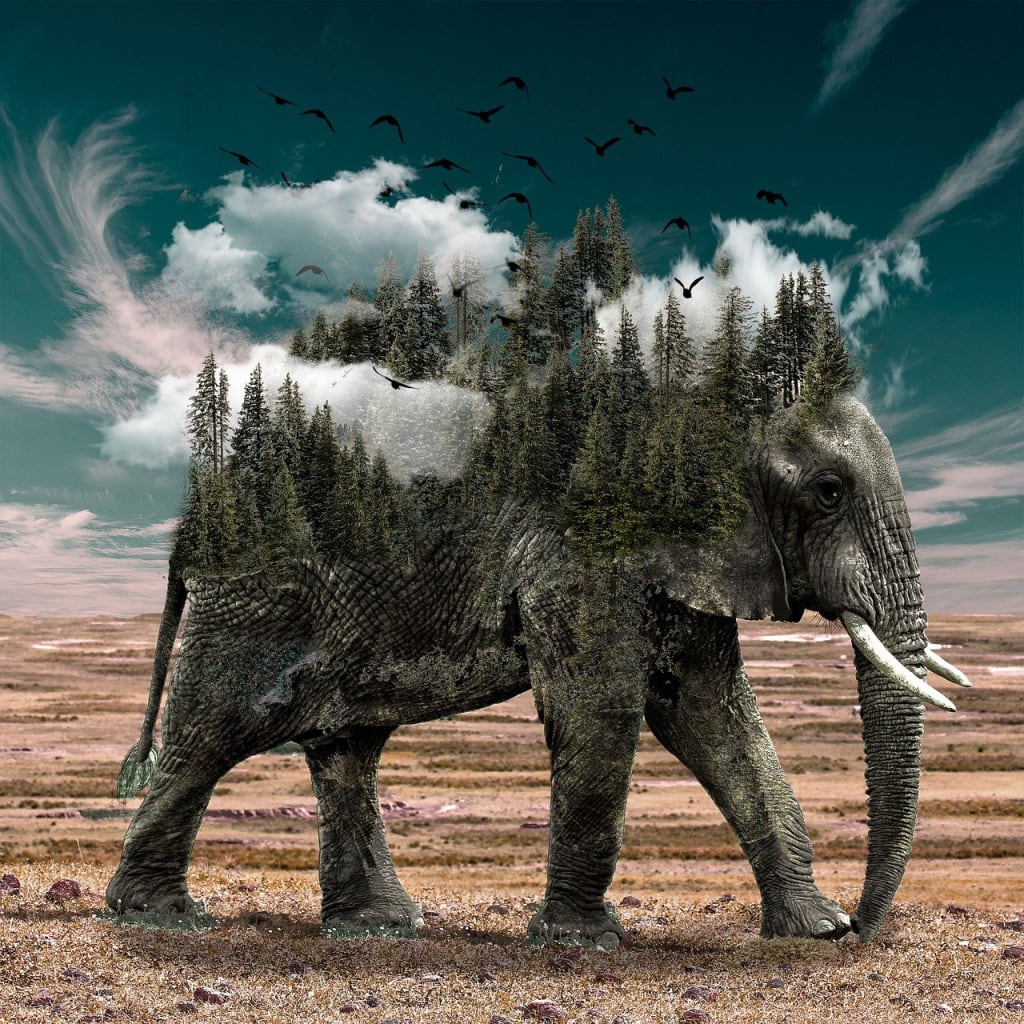Gigantic Wonders
Exploring the World's Largest Animals

Welcome to the captivating realm of colossal creatures that inhabit our planet! We extend an invitation to embark on a mesmerizing journey as we acquaint you with 15 abnormally large animals that truly exist. From the enchanting depths of the ocean to the verdant rainforests and the vast savannas of Africa, these majestic beings have held human fascination for generations, owing to their remarkable size and unparalleled adaptations.
Prepare to be enthralled as we unravel the extraordinary lives of these gigantic animals, each boasting a unique set of characteristics and survival strategies that set them apart from their counterparts. From the gentle giants gracefully roaming the seas to the awe-inspiring predators prowling the land, these remarkable creatures exemplify the rich diversity and marvels of the natural world. So, without further ado, let us plunge into the enchanting world of the largest living beings on Earth!
1. Blue Whale
The blue whale holds the title of the largest animal ever to have existed on Earth. These gigantic marine mammals can grow up to 100 feet (30 meters) in length and weigh as much as 200 tons (181 metric tons). Predominantly found in the world's oceans, blue whales have a unique diet consisting mostly of tiny shrimp-like creatures called krill. Despite their enormous size, blue whales have relatively small throats, which prevent them from consuming larger prey. Instead, they filter enormous quantities of krill through their baleen plates, consuming up to 40 million krill per day during the feeding season. Blue whales have a distinct streamlined body shape, allowing them to glide effortlessly through the water. They are also known for their powerful vocalizations, producing some of the loudest sounds in the animal kingdom, essential for communication and navigation.
2. African Elephant
The African elephant is the largest land animal on Earth, with males reaching up to 13 feet (4 meters) in height and weighing up to 14,000 pounds (6,350 kilograms). These majestic creatures are found throughout the African continent, inhabiting savannas, forests, and deserts. They can be distinguished from their smaller Asian counterparts by their larger ears, shaped like the African continent, and the presence of two finger-like projections on the tip of their trunk. African elephants are herbivores, consuming a diverse diet of grasses, leaves, fruit, and bark, spending up to 18 hours a day feeding. They are known for their strong bonds and displays of affection, as well as their remarkable intelligence and problem-solving abilities.
3. Saltwater Crocodile
The saltwater crocodile, also known as the estuarine or Indo-Pacific crocodile, is the largest living reptile on Earth. These apex predators can grow up to 23 feet (7 meters) in length and weigh up to 2,200 pounds (1,000 kilograms). They inhabit coastal regions, estuaries, and rivers in parts of Southeast Asia, Northern Australia, and the eastern coast of India. Saltwater crocodiles are excellent swimmers, using their powerful tails and partially webbed feet to maneuver effortlessly. They are known for their ambush hunting technique, waiting patiently for prey to approach before launching a swift and powerful attack.
4. Giraffe
Giraffes are the tallest animals on Earth, with adult males reaching heights of up to 18 feet (5.5 meters). They inhabit the savannas, grasslands, and open woodlands of sub-Saharan Africa. Their extraordinary height provides several advantages, including a wider field of vision to spot predators and access to leaves and foliage that are out of reach for other herbivores. Giraffes are primarily herbivorous, consuming a diet rich in leaves, stems, and fruits from trees, particularly favoring the acacia tree. They have a prehensile tongue that can measure up to 18 inches (45 centimeters) long, which they use to strip leaves from branches and avoid the tree's thorns.
5. Eastern Gorilla
Eastern gorillas, including the mountain gorilla and the eastern lowland gorilla, are the largest living primates on Earth. Adult male eastern gorillas, known as silverbacks due to the silver hair on their backs, can weigh up to 440 pounds (200 kilograms) and stand up to 5.6 feet (1.7 meters) tall when upright. These magnificent creatures inhabit the dense forests and mountainous regions of Central and Eastern Africa. Eastern gorillas are primarily herbivorous, consuming a diet rich in leaves, stems, fruits, and occasionally insects. They live in cohesive social groups known as troops, typically led by a dominant female known as the matriarch.
6. Whale Shark
The whale shark is the largest fish species on Earth, reaching lengths of up to 40 feet (12 meters) and weighing as much as 20.6 tons (18.7 metric tons). Despite their enormous size, these gentle giants are filter feeders, consuming vast quantities of plankton, krill, and small fish. Whale sharks inhabit warm tropical oceans around the world and are often found swimming near the surface, where they bask in the sun to warm their bodies. They are known for their distinctive white spots and stripes on a bluish-gray background.
7. Ostrich
The ostrich is the largest bird species on Earth, with adult males standing up to nine feet (2.7 meters) tall and weighing up to 320 pounds (145 kilograms). These flightless birds are native to the savannas and grasslands of Africa, where they have adapted to a terrestrial lifestyle with remarkable speed and agility. Ostriches are characterized by their long legs, neck, and large round body covered in feathers. They have a muscular elongated body with a broad head and large erect ears. Despite their size, ostriches are known for their calm and friendly nature, making them popular pets and show animals.
8. Kodiak Bear
The Kodiak bear, also known as the Alaskan brown bear, is one of the largest and most powerful terrestrial carnivores on Earth. Adult males can weigh up to 1,500 pounds (680 kilograms) and stand up to five feet (1.5 meters) tall at the shoulder when on all fours, with a standing height of up to 10 feet (3 meters). These impressive animals inhabit the Kodiak archipelago in Alaska and are closely related to the mainland grizzly bear. Kodiak bears have a distinctive appearance, featuring a rounded, spiked carapace and elongated spindly legs that resemble those of a spider.
9. Green Anaconda
The green anaconda is the world's largest snake by mass, with adult females weighing up to 6.2 ounces (175 grams) and having a leg span of up to 11 inches (28 centimeters). These impressive arachnids inhabit the rainforests of Northern South America, where they reside in burrows and venture out at night to hunt for prey. Despite their name, Goliath birdeater spiders rarely consume birds; they primarily feed on insects, amphibians, and small mammals. Goliath bird eater spiders have a slow growth rate and can live for up to 100 years.
10. Capybara
The capybara is the world's largest rodent, weighing up to 140 pounds (64 kilograms) and measuring up to 4.3 feet (1.3 meters) in length. These gentle social animals inhabit dense forests and savannas near bodies of water, such as rivers, lakes, and swamps. Capybaras have a barrel-shaped body, short legs, and a blunt, rounded head with small ears and eyes positioned high on their skull. Despite their size, capybaras are known for their calm and friendly nature, making them suitable companions for families and individuals alike.
11. Japanese Spider Crab
The Japanese spider crab is the largest species of crab, boasting the longest leg span of any arthropod in the world. These fascinating marine creatures can be found in the waters surrounding Japan, dwelling at
About the Creator
Enjoyed the story? Support the Creator.
Subscribe for free to receive all their stories in your feed. You could also pledge your support or give them a one-off tip, letting them know you appreciate their work.





Comments
There are no comments for this story
Be the first to respond and start the conversation.